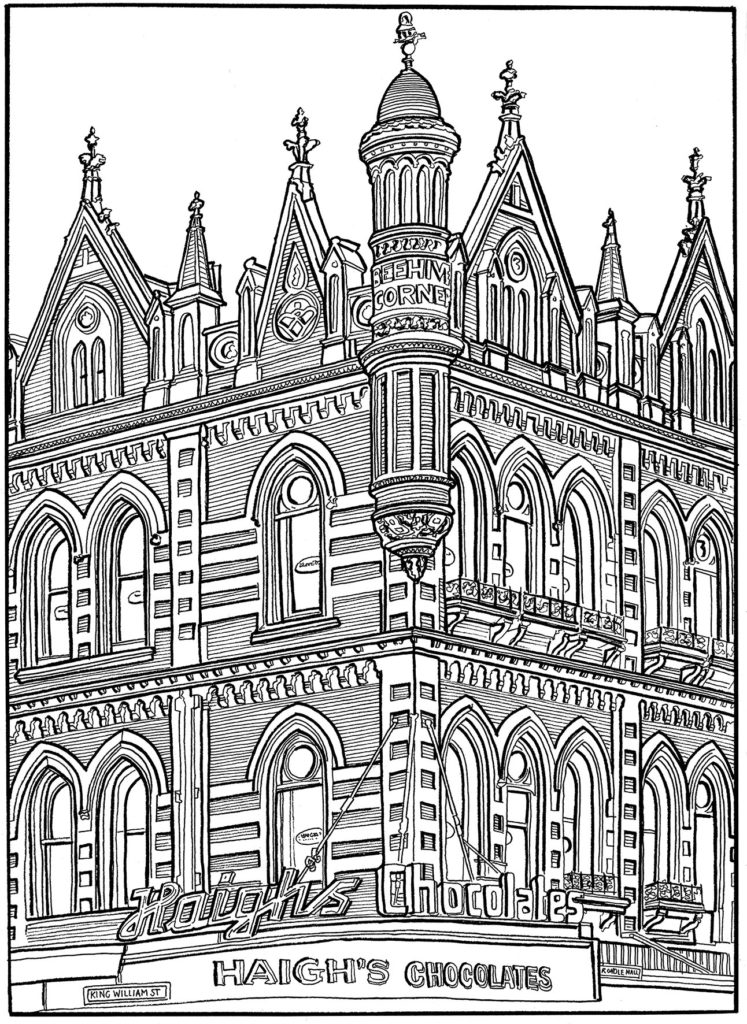
Beehive Corner Adelaide
Beehive Corner: A Historic Landmark of Adelaide.Adelaide, the capital city of South Australia, is known for its rich history, stunning architecture, and vibrant culture. Among its many historic landmarks, Beehive Corner stands as an iconic symbol of the city's heritage. This ornate building, located at the intersection of Rundle Mall and King William Street, has played a significant role in the city's history and continues to be a focal point of Adelaide's culture and commerce.
Beehive Corner was constructed in 1895 by architects Woods, Bagot, and Jory, and it was originally designed as a flagship store for the Harris Scarfe department store. The name "Beehive Corner" is derived from the beehive sculptures that adorn the building's façade, symbolizing industry and collaboration – values that have resonated with the people of Adelaide for generations.
The architectural style of Beehive Corner is a testament to the opulence and grandeur of the late 19th century. The building showcases elements of the Second Empire architectural style, characterized by its mansard roof, ornate ironwork, and decorative stonework. This style was popular during the period and represented Adelaide's aspirations to become a cultural and commercial center.
Over the years, Beehive Corner has been witness to numerous historical events and has been a central hub for commerce. In its early days, the department store was a bustling center for retail and fashion, drawing shoppers from all around South Australia. The building's iconic tower and clock, which was added in 1930, served as a notable timepiece for the city.
During World War II, Beehive Corner took on a new significance, as it was used for military purposes, including as a communication and observation post. The building's height and strategic location made it an ideal site for monitoring and relaying information during the war.
Today, Beehive Corner continues to be a bustling hub of activity. It houses various retail shops and restaurants, making it a popular destination for both locals and tourists. Its central location in Rundle Mall, one of Adelaide's premier shopping districts, ensures a steady stream of visitors year-round.
The charm of Beehive Corner extends beyond its historical and architectural significance. It serves as a backdrop for various cultural events and festivities in the city. During Christmas, the building is adorned with festive decorations and lights, becoming a picturesque setting for holiday gatherings and celebrations.
In conclusion, Beehive Corner stands as a testament to Adelaide's rich history and architectural heritage. Its iconic presence in the heart of the city serves as a reminder of the past while providing a vibrant and dynamic space for commerce and culture in the present. Beehive Corner remains a cherished landmark, and its continued relevance in the modern era is a testament to its enduring legacy in Adelaide's history. Whether you're a history enthusiast, a shopper, or simply a visitor to the city, Beehive Corner is a must-see destination that encapsulates the spirit of Adelaide.
The building's architectural style, Second Empire, was characterized by opulence and classical elements. Notable aspects of Beehive Corner's architectural design include:
- Mansard Roof: The most distinctive feature of Beehive Corner's architecture is its mansard roof, which is a defining characteristic of the Second Empire style. This roof type features a steeply sloped lower section and a nearly flat upper section, often punctuated by dormer windows. At Beehive Corner, the mansard roof is ornately adorned with intricate ironwork, adding to its grandeur.
- Ironwork: Elaborate cast-iron balconies and railings are a prominent feature of the building's design. These intricate ironwork details contribute to the building's overall decorative and luxurious appearance. The ironwork is both functional and aesthetic, showcasing the craftsmanship of the era.
- Decorative Stonework: Beehive Corner is adorned with decorative stonework, including carvings and ornate detailing around the windows and entrances. The building's facade showcases a blend of stone and brickwork, with these materials carefully chosen to create a visually striking and enduring structure.
- Tower and Clock: The addition of the tower and clock in 1930 further enhanced the building's iconic status. The tower's design is in harmony with the Second Empire style and features clock faces on each side, making it a prominent landmark in Adelaide. The clock has been a reliable timekeeper for generations of city dwellers and visitors.
- Bees and Beehives: As the name "Beehive Corner" suggests, the building's facade is adorned with bee and beehive sculptures. These decorative elements symbolize industry, collaboration, and hard work. Bees are often associated with the collective effort, and the presence of these sculptures adds a layer of meaning to the building's design.
Beehive Corner's architectural design has stood the test of time, and its well-preserved details continue to captivate admirers and architectural enthusiasts. The building's opulence and elegance are a reflection of the aspirations of Adelaide during the late 19th century when it was constructed.
Moreover, Beehive Corner's architectural style is not only a celebration of the past but also an embodiment of Adelaide's historical commitment to excellence in design and craftsmanship. Its continued significance in the modern era attests to the enduring appeal of Second Empire architecture and its enduring presence in the city's architectural tapestry.
In summary, Beehive Corner's architectural design is a striking representation of the Second Empire style, known for its opulence, decorative elements, and mansard roofs. The building's blend of stone, brick, and ironwork, as well as the iconic clock tower and bee sculptures, make it a beloved and cherished landmark, embodying the history and architectural legacy of Adelaide.